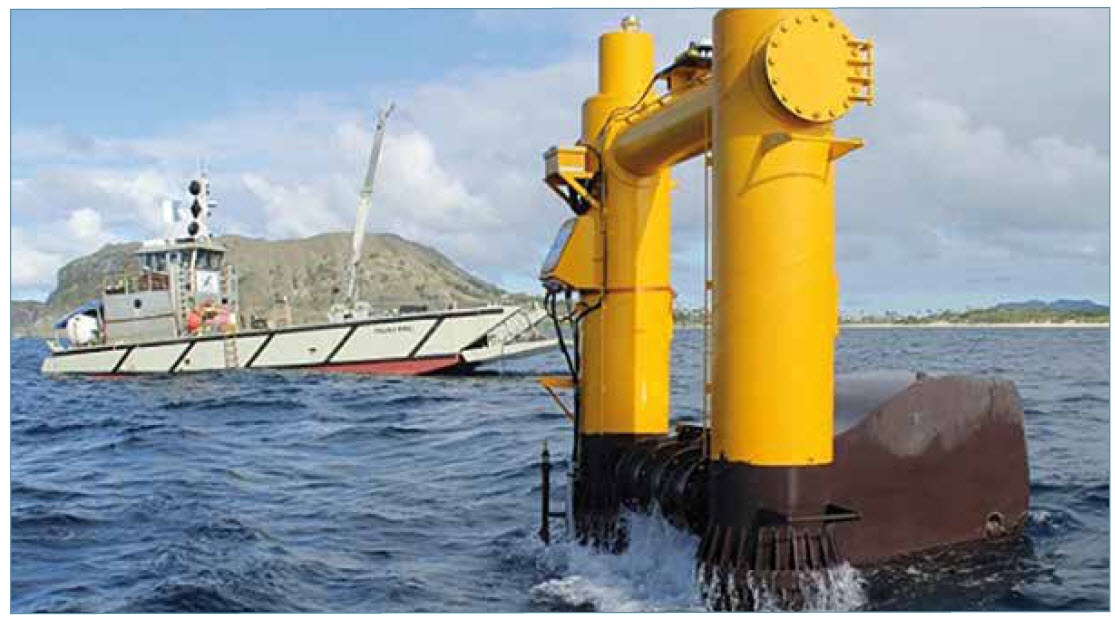NEW ZEALAND
OPEN SEA TEST SITES
A 2015 Business Case sought Government commitment to invest in the establishment of a marine energy testing facility, the New Zealand Marine Energy Centre (“NZMEC” or “the Centre”) located in the Wellington region. The balance of investment requirements would be provided as in-kind private sector funding from a multinational firm. NZMEC’s testing facilities will be located on up to four sites at Baring Head, Moa Point, Cape Terawhiti and Kapiti to provide ocean based pre-commercial scale testing services for wave and tidal energy device developers from nursery (prototype/pilot) through to full scale, grid connected devices. The JV will enable NZMEC to stand as a global centre of excellence for marine energy testing. The development is currently on hold awaiting investment.
OPERATIONAL PROJECTS
AZURA Wave – testing in Hawaii. A prototype wave generator called Azura is supplying grid power to Hawaii, the first time such a feat has been officially verified, according to the US Department of Energy (DoE). This completed a year’s worth of testing in 2016.
More information at: http://www.engadget.com/2015/07/07/wave-generator-hawaii-power-grid/
The initial technology development, called Wave Energy Technology New Zealand or WET-NZ, was conducted by Callaghan Innovation (formerly Industrial Research Limited), which is a New Zealand Crown Research Institute. Since development began in 2006, the technology has advanced from initial concept to open ocean pilot testing. Recognizing the potential of the US market, NWEI began collaborating with Callaghan to further develop and optimize the technology.
Since commencing operations in 2010, NWEI and its partners have successfully completed pilot scale projects in New Zealand and Oregon, and NWEI is now preparing for a grid connected demo project at the US Navy’s Wave Energy
Test Site at the Marine Corps Base Hawai’i. Unlike other wave energy technologies, Azura extracts energy from both the heave (vertical) and surge (horizontal) motion of the wave, producing power from the relative rotational motion between the hull and float. The Power Take Off (PTO) system is based on high pressure hydraulics and is located within the PowerPod.

http://azurawave.com/wave-generator-supplies-us-electrical-grid-for-the-first-time/



